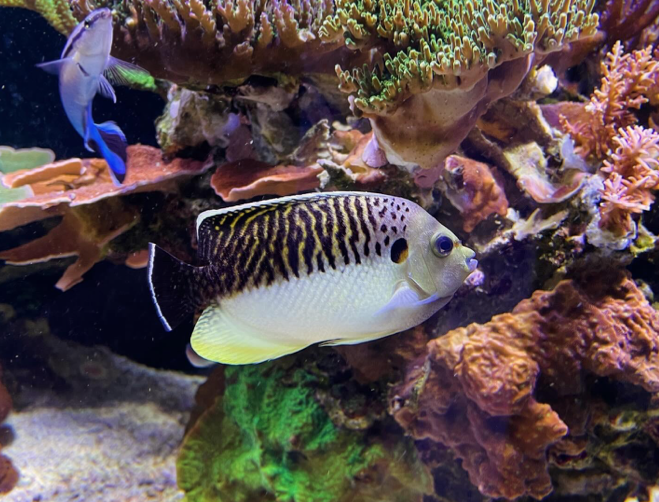Have you ever owned a reef-safe angelfish? A hot topic of discussion that has yet to be answered. If you peruse the forums, you will find yourself reading a multitude of different opinions. Some believe they will get lucky and find that gem of a fish that decided to go against its internal instincts and not nip at your precious corals.
In my experience, there is no such thing as a reef-safe angelfish with the exception of the genus Genicanthus, which are distinguished by their swallowtail or lyretail and small mouths designed for feeding on plankton out of the water column. So why do we see so many successful reef tanks with large angelfish and how is this even possible?

In my opinion, there is no special secret or trick to train your angelfish to only take prepared foods. It is simply just against their nature to take prepared food from the water column, let alone remove instinctive foods completely from their diet. I’m of the belief you have to accept the fact your angelfish are going to nip and graze throughout the day and it’s all up to you to select the appropriate corals to hedge against this. I have found that maintaining a dense and abundant variety of corals is of great importance before adding your angelfish.
Fill the tank with corals first
So what are some guidelines you should follow? Consider adding your angelfish to an established reef tank full of colonies and mature live rock coated with delicious sponges and algae. Far too many hobbyists jump the gun and add their angelfish to a newly established tank with nothing more than coral fragments and barren rock work, forcing the fish to target their newly prized coral acquisitions. What I am certain of is angelfish like to cruise around the tank hunting and grazing.
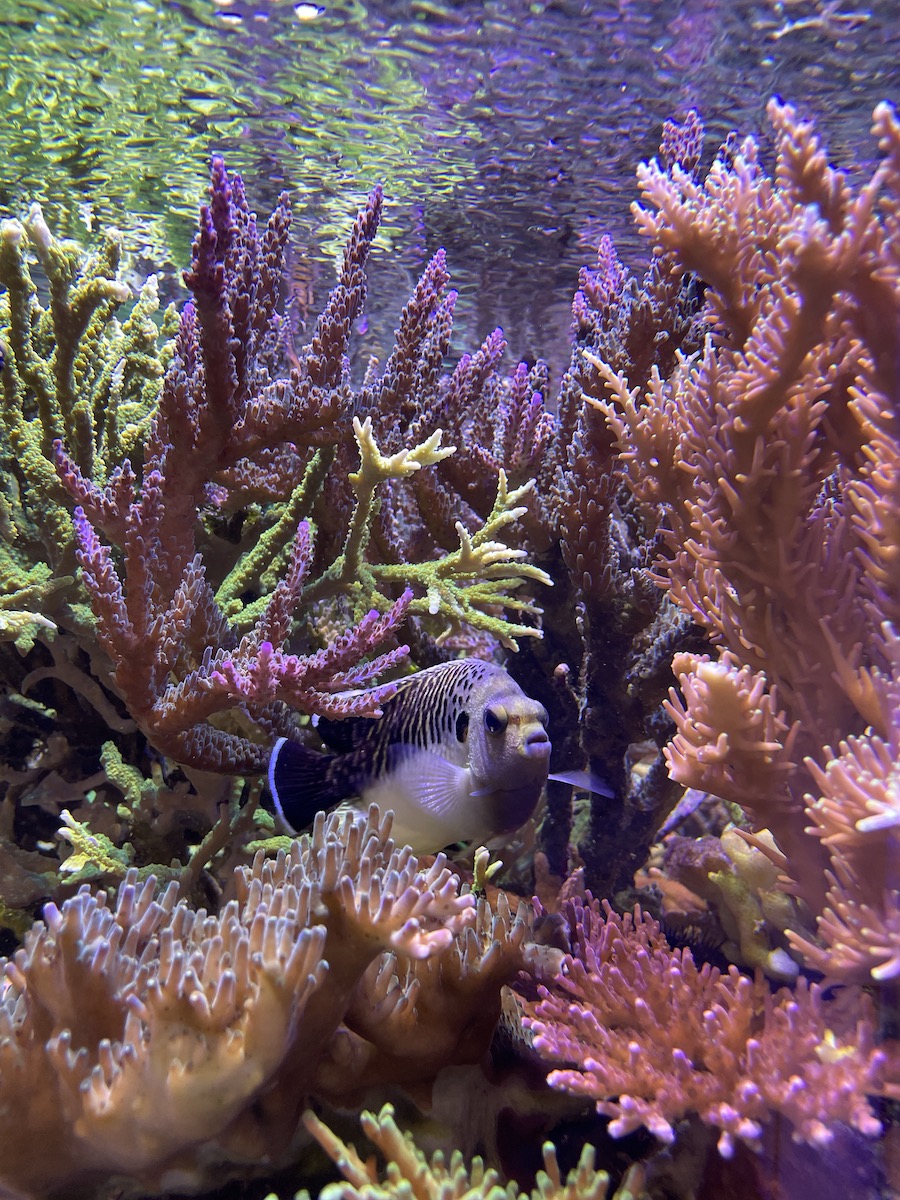
I found they tend to simply nip and move on, almost tasting out of boredom or habit. So knowing that the inevitable will occur and your angelfish will nip, it is important to steer your coral acquisitions to less likely targets and remove corals that will certainly subdue to predation. One thing for certain is you will lose your prized zoanthids, which are basically little bite-size pieces of angelfish candy.
Fleshy Long Polyp Stony (LPS) corals is a term we use often. Many state that angelfish will consume all fleshy LPS; however, this isn’t entirely true. For example, I would steer clear of Micromussa lordhowensis, Scolymia (Homophyllia,) Goniastrea, Pectinia, Caulastrea furcata, Lobophyllia, and Trachyphyllia to name a few.
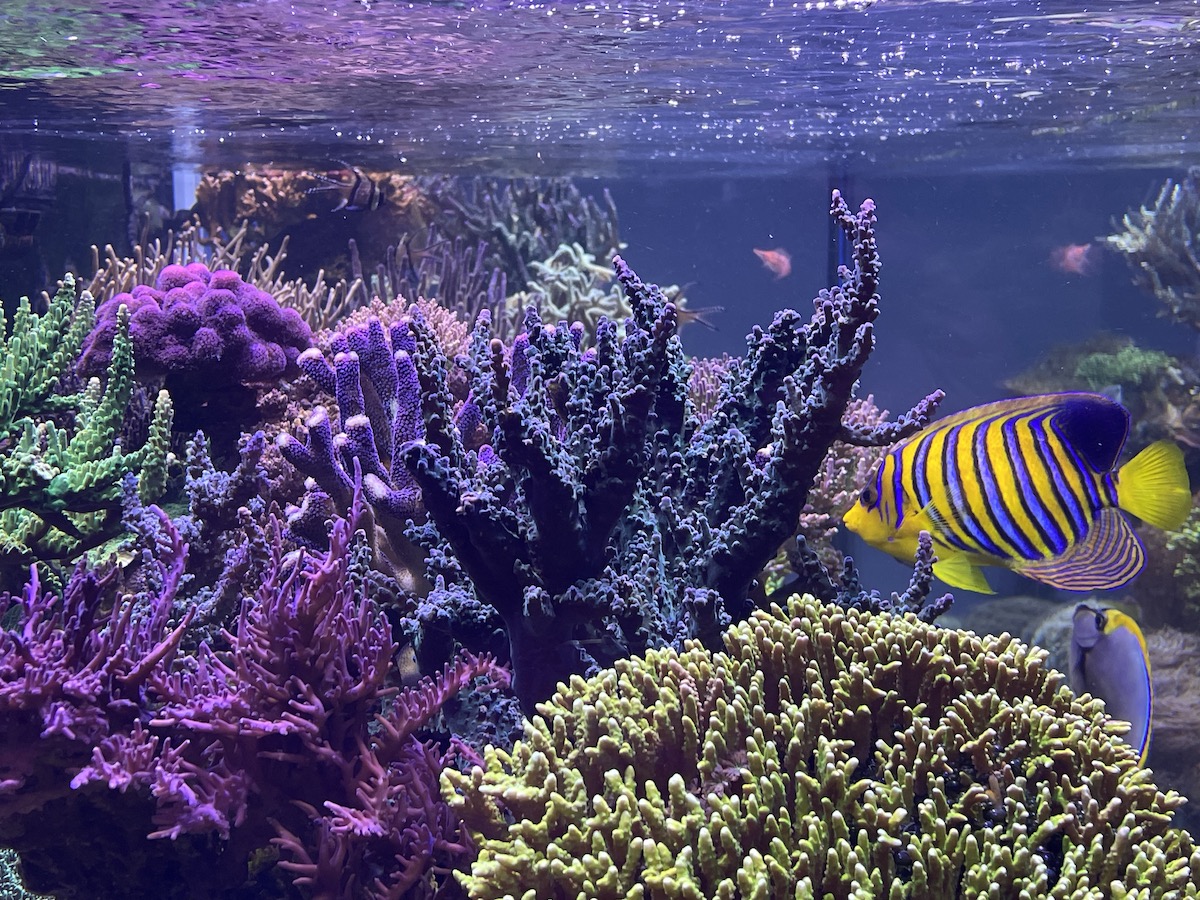
But there are so many other corals available that I have found a few that seem to be relatively safe bets for myself: Acanthastrea echinata, Leptastrea, Cyphastrea, Euphyllia cristata, Euphyllia parancora, Euphyllia glabrescens, Goniopora, Alveopora, Catalaphyllia jardinei, Duncanopsammia axifuga, and Fungia just to name a few.
There is also a list of a few corals that I find on the edge: Favities, Echinophyillia, Mycedium, and bowerbanki. My angelfish tends to nip on these corals randomly but not target feed on them. Small Polyp Stony (SPS) corals are the most safe option for your angelfish due to their rapid regrowth and healing capabilities. They tend to withstand minor predation better. There is the exception of a few slimier types which makes sense considering their tasty flesh.
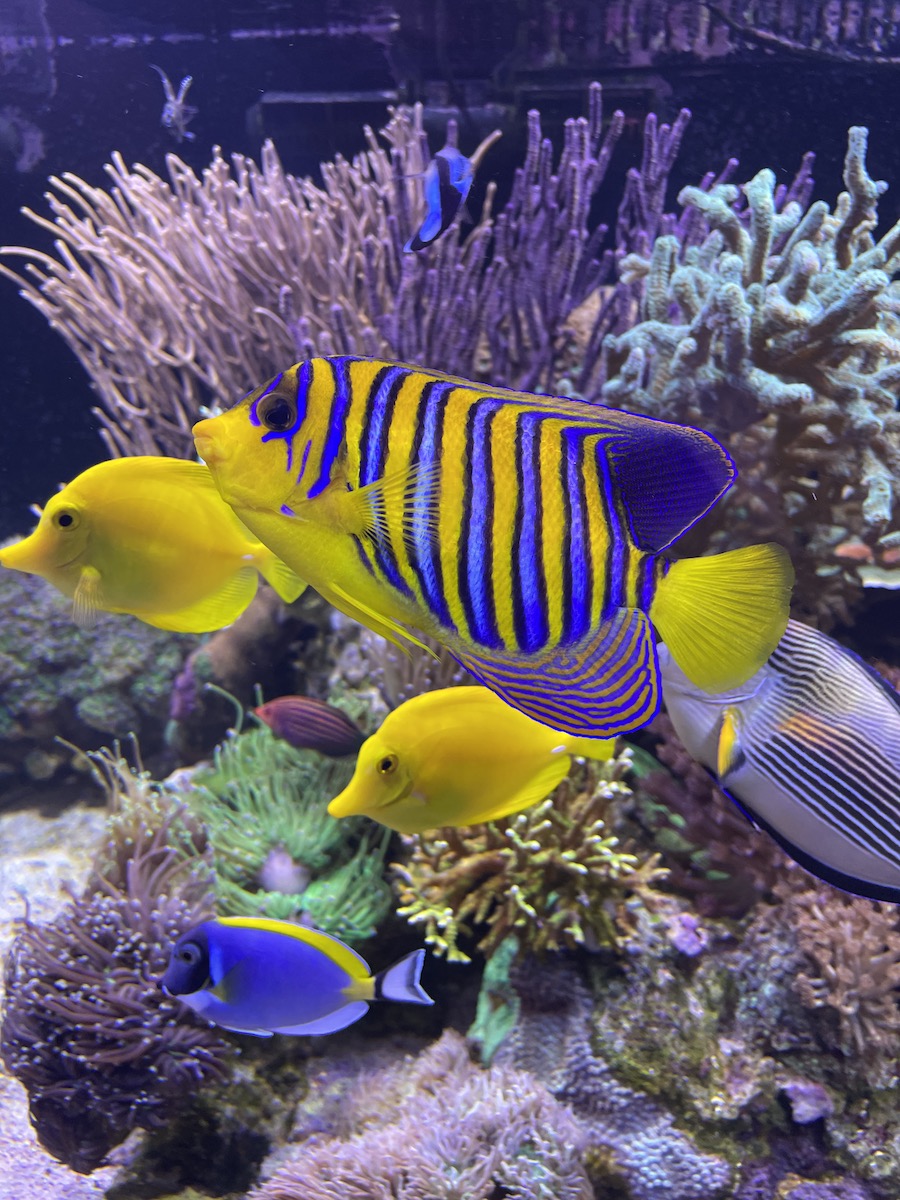
Soft corals for me are hit and miss. I kept Sarcophyton with my angels for a short period but eventually, they developed a taste for polyps and I had to, unfortunately, remove my prized Fiji yellow leather Sarcophyton elegans. However, I have found that they ignore a few corals from the genus Gorgonian, Sinularia, and Clavularia, and probably many more.
Size
Don’t be fooled by size. Without experience, one would assume a large 8”/20cm Regal Angelfish would inflict more damage than a common dwarf angelfish. It can be quite the opposite. Just a simple African Flameback or Lemonpeel Angelfish can become quite the headache. They can or may continuously pick and nip at almost all corals and can be very difficult to capture. Because of this, I would highly recommend the following two angelfish as starters if you have the appropriate tank size: Pygoplites diacanthus, the Regal Angelfish, and Pomacanthus navarchus, the Majestic or Blue-girdled angelfish.
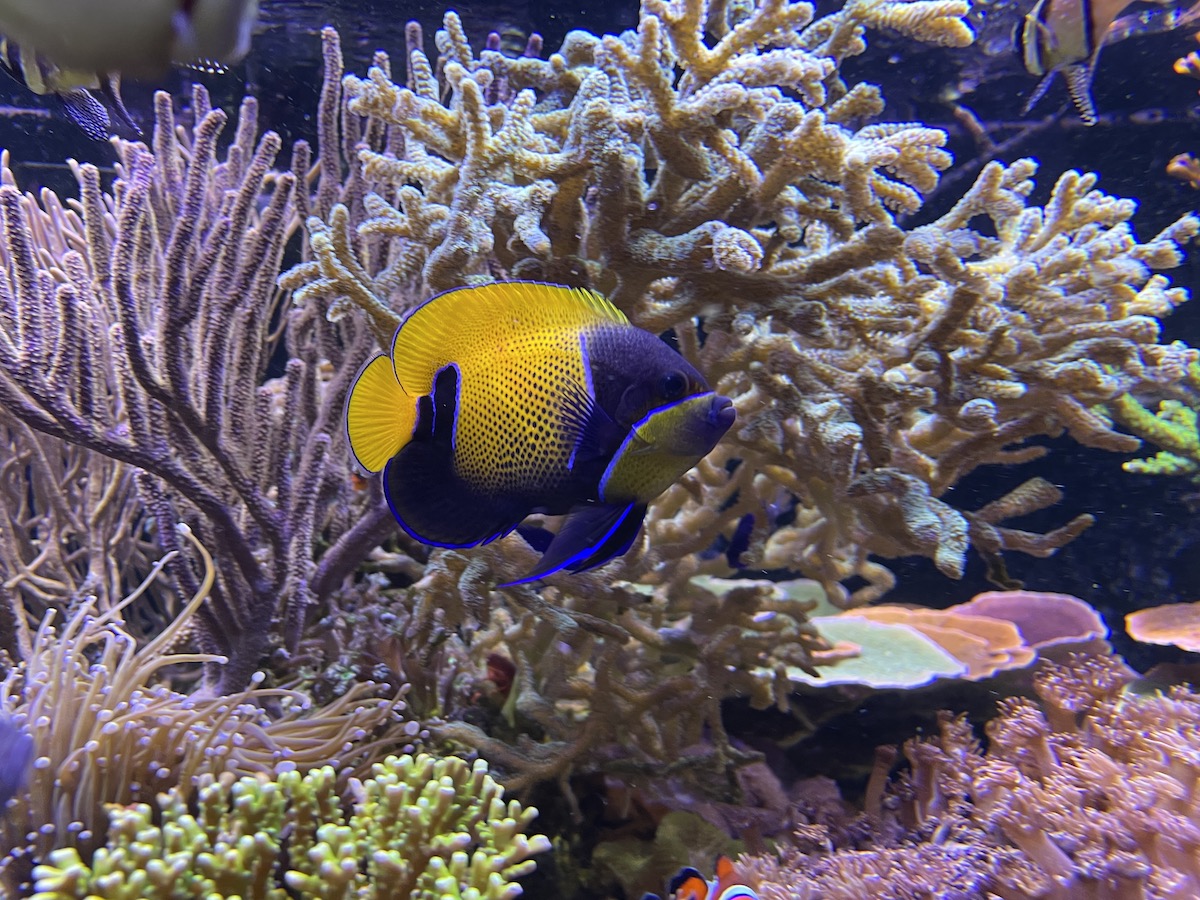
Does the nipping harm all corals? Some even speculate that the nipping encourages growth. I have noticed over the years that my angelfish actually seem to prevent coral warfare between certain species. In fact, angelfish seem to be very attracted to corals that are under stress and they enjoy nipping the connecting front line of two separate corals. Because of this, I seldom see the telltale signs of coral warfare: sweeper tentacles and/or mesenterial filaments.
What should we take from all this? We can almost certainly assume that your angelfish will in fact nip at your corals, so don’t fall into the trap of convincing yourself that maybe you will be the lucky one who will find that special case specimen. I’m of the opinion that they are well worth the risk so turn a blind eye to the random nipping. Don’t forget there is a multitude of corals at your disposal that you can keep with your precious angelfish that will flourish in your tank, so don’t get discouraged if your angelfish start picking at your corals. You can instead find suitable corals for your angelfish.
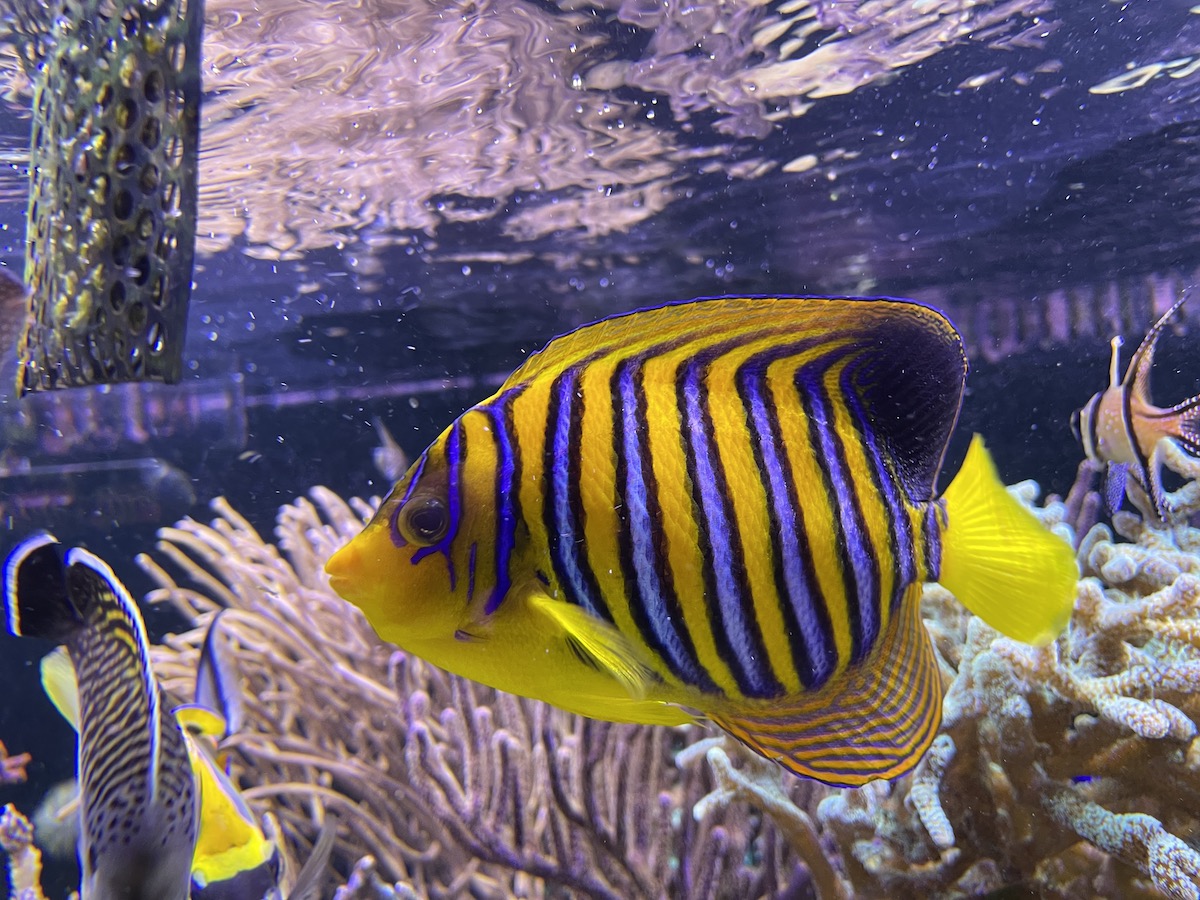
It will be a process of trial and error to find suitable tank mates and, with everything else in the hobby, it also takes patience and time. I know this may not be the concrete answer you were hoping for but it’s a good starting point to get in the mindset of which direction to steer your tank if you plan on having angelfish in the future.
About the author

Jason Brown, also known as @unorthodox_reef, is a father and an avid reef keeper who has been keeping aquariums for over 35 years. He became obsessed with the saltwater aspect of the hobby in the late 90s and has been passionate about it ever since. As an aircraft composite specialist by trade, he finds the hands-on aspect of the hobby second nature. He has always done things a little unorthodox and is not afraid to seek and learn a better way in this ever-changing hobby. See more from Jason and his incredible reef tank in the video below.


